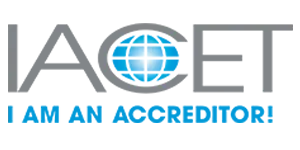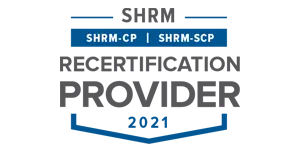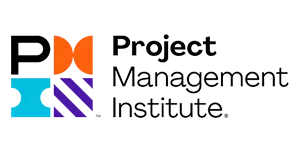P
-
PERT.
Six Sigma Black Belts and Green Belts, when organizing schedules for large projects, will often use PERT to compile and plan their activities. PERT is a graphical method usually completed via computer. It stands for Project Evaluation & Review Technique. To use PERT, it is beneficial to have some experience of CPM (Critical Path Method) as they are similar processes. In PERT, a series of horizontal and diagonal connected lines represent your activities, with numbered nodes at key points standing for milestones. You should number each line differently, to represent the durations for each project task. PERT is used in process improvement to organize and plan timelines for the project. It is highly effective for scoping the duration of your work.
-
PEST Analysis.
A type of strategic approach, you can use PEST analysis to analyze your organization’s macro-environment. It is an acronym for Political, Economic, Social, and Technological. Using PEST analysis, you should run your company by each of these four areas to glean detailed information about their drivers and influences. Political should include a wide range of data. It should cover concepts like political stability, economic and taxation policies, as well as trading agreements and any other national or international concerns. Economic should shed light on your company’s interest rates, employment levels, economic trends, and GDP. While Social will allow you to analyze the religious influences (if any) affecting your company, as well as any population demographic factors, and other religious and cultural concerns.
Finally, Technology, the most wide-reaching of the four, will cover an array of subjects. Subjects like innovation, manufacturing costs, product quality, and the way technology affects marketing and distribution. The internet is a prime example of how technology has affected the business world. Six Sigma Black Belts and Green Belts may wish to use PEST analysis to learn more about the company on whose project they are working. It is a similar process to the SWOT analysis and Porter’s Five Forces analysis types.
-
Poka-Yoke.
Use in Lean Production, Poka Yoke is a device used by Lean practitioners to prevent error. When we make mistakes in production, they can often be costly and time-consuming to correct. Poka-Yoke was designed to simplify the correction process by immediately highlighting problems or making mistakes immediately clear. As an example, you could easily forget about a metal nut that requires tightening with a torque spanner. You may not realize you have left it loose. With Poka-Yoke, you could design a fixture that prevents the assembly line from moving until the torque spanner has recorded the correct torque. This could be automatic and relay information directly to a computer that will alert you something is wrong. That way, the error won’t cause further problems down the line and can be quickly.
Q
-
QS9000/TS16949.
First published in 1994, QS9000 is a type of quality system developed by Daimler-Chrysler, Ford, and General Motors. QS9000 is used most often in the automotive industry and in other types of manufacturing. While its designers reissued QS9000 in 1998, companies have started phasing it out, replacing it with an arguably superior system called TS16949. Although some organizations still use QS9000, it is likely to be completely replaced in the coming years. Large automotive companies like Ford rely on suppliers for their parts, materials, and services. Additionally, these services must comply with the principles of QS9000 if it is to be effective.
QS9000 is based on an older standard, ISO9000:1994, which many automotive companies often used as a baseline. It imposed extra requirements and interpretations in production but designers updated it to ISO9000:2000 at the Millennium. This new standard was significantly different to its predecessor. However, in recent years designers have modified it to create TS16949, as opposed to revamping QS9000. A series of manuals, developed by the AIAG (Automotive Industry Action Group), provided precise information about how organizations should operate by the TS16949 standard. Six Sigma practitioners working in the automotive industry will work alongside QS9000/TS16949 protocols while conducting quality improvement.
R
-
Randomized Block Design.
This is an approach to Design of Experiments, also known as Experimental Design. If you wanted to compare four cleaning products, you could use Randomized Block Design to make a realistic test to determine the best. In Completely Randomized Design, you would randomly allocate a series of dirty kitchen surfaces to volunteers with each cleaning product. This way, you could choose one product for up to all four surfaces. In a Randomized Block Design, however, you place a block on your surfaces. This means you would allocate only one surface from each volunteer to each product. Six Sigma Black Belts or Green Belts, when involved in Experimental Design or statistical analysis, may wish to use Randomized Block Design.
-
Robust Design.
A man named Genichi Taguchi pioneered the Robust Design concept, which forms the basis of the Taguchi Approach to Experimental Design. Taguchi stressed that reducing variation in design should be a core principle for process improvement. It was his belief that it’s better to create a product that provides consistently good results. This was in contrast to products that gave better results but were inconsistent. Taguchi called this idea the ‘robustness’ of design, and manufacturing companies utilize its principles all over the world. It is essential for Six Sigma and Lean practitioners to cultivate such robustness in process improvement.
Taguchi also created a quantitative model called the Taguchi Loss Function, which allows you to identify the lowest costing design easily. Building on his previous work, Taguchi came up with an approach for designing products with robustness in mind. His process has three stages. System design (using scientific and engineering principles to build a prototype). Parameter design (identifying the settings that will minimize variation for product and process parameters). Tolerances (setting tolerances that will control parameters and reduce losses).
-
Run Charts.
Six Sigma Belts use Run charts on process improvement projects. Green Belts, when conducting statistical work may choose to use run charts to plot data values in time order. Similar to a standard line graph, you have an X and Y axis, labeled according to your timescale and the data set with which you are dealing. Once you’ve plotted your data onto the graph and joined, you should draw a center line to show the median value. The run chart defines your run as one or more consecutive points of the same median. When you analyze the patterns, they will indicate a special cause, such as:
- Too few or too many runs for a series of points.
- Too many data points in your run.
- An abnormally long sequence of rising or falling data points.
- Too many points that form a zigzag pattern.
It is beneficial to be familiar with control charts, as run charts are similar, though they both possess important differences. While control charts are better at perpetually monitoring processes, run charts provide a better process with which to investigate opportunities for improvement. Six Sigma Black Belts or Green Belts may use run charts to assess their data when prioritizing their process improvement tasks.









No responses / comments so far.